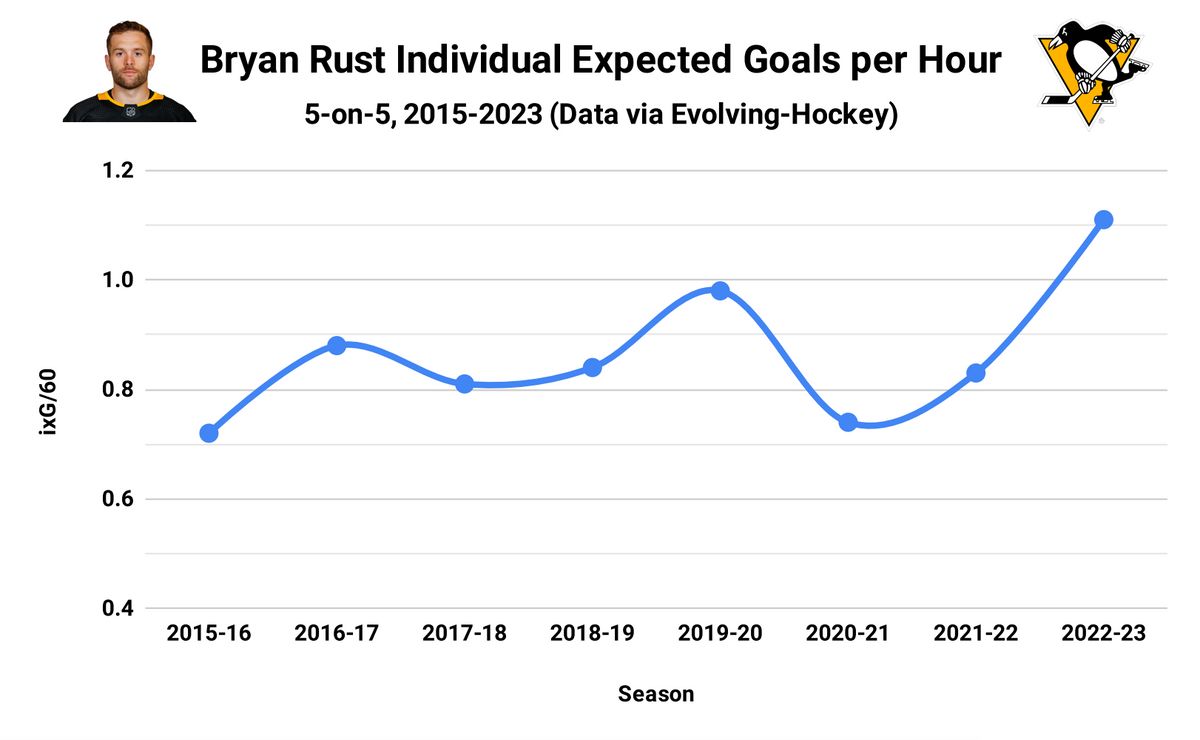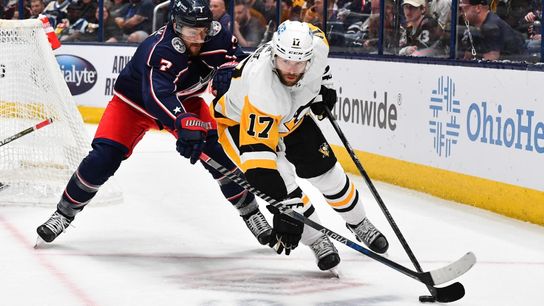With the exception of a second-line left-winger, the Penguins' top six is pretty much set heading into next season.
Jason Zucker is a pending unrestricted free agent, but Sidney Crosby, Evgeni Malkin and Jake Guentzel aren't going anywhere. Rickard Rakell just had a 28-goal, 60-point season and has a 10-team no-trade clause in his contract. He isn't likely to go anywhere, and I don't see a reason to try and move him.
That leaves Bryan Rust. Of the five top-six forwards currently under contract, he would seem to be the most likely candidate for a trade, if Kyle Dubas were interested in a shakeup. However, Rust has complete say over whether or not he stays with the Penguins due to a full no-movement clause.
Never say never, but the odds of him waiving that clause just a year removed from signing a six-year deal to remain in Pittsburgh aren't favorable. For the sake of this piece, we'll continue forth under the assumption he'll be a Penguin when the puck drops in October.
There's no denying Rust had the most disappointing season of any top-six forward on the Penguins in 2022-23. He played a career-high 81 games, but scored goals and put up points at his lowest per-game pace since 2018-19, which was right before he graduated to a top-line role on a consistent basis.
He endured a few lengthy goal droughts throughout the season. Particular games looked like a real drag for him. It wasn't always missing, but there were times it felt like he just didn't have that tactically-aggressive edge.
Not to keep pouring on here -- because there are quantifiable positives on the way -- but during the 2021-22 season I started to notice subtle changes in Rust's game that I interpreted to be limiting his overall impact. Sometimes, he seemed to be straying from a few of the checking-role qualities that originally brought him success in the NHL and, specifically, alongside Crosby and Guentzel.
He thrived as a great complement next to them. He was a hunter. Always on the puck. He embraced some of the unheralded components of the game that breed winning. And then he managed to blend all of it with a developed offensive skill set to stick at the top of the lineup and produce 156 points in 171 games from 2019-2022.
At some point, the dynamic kind of flipped. Instead of making a soft chip to himself off the boards to beat a defender in a one-on-one situation or getting the puck deep and hunting it down, he'd unnecessarily try and dangle his way around them or simply try to do too much, sometimes resulting in brutal turnovers and wasted possessions.
He'd developed enough skill to hang up top. He hadn't developed enough skill to start relying on it more than anything else, but he persisted on trying.
An example from last November in an early measuring-stick game against the Bruins:
With the Penguins leading, 5-4, in the late stages of the game, Rust did well to collapse low around the net and quickly support the breakout upon a change of possession.
While Crosby emerged with the puck from behind the net, Rust, as the weak-side winger, immediately started to head up ice in order to back the Bruins' defenders off and potentially receive a pass to get out of the zone. Crosby recognized Rust in the middle of the ice with nobody around him and dished a pass, but it wasn't on the money.
Despite the pass coming in from behind, Rust still had the opportunity to go heel-to-heel and open up and receive it out front of himself, or at the very least decelerate to ensure possession of the puck. Instead, he noticed all the room in front of him and opted for the skillful, no-look pass reception off the skates without changing his angle or speed, which resulted in the puck caroming off his skate blade, all the way down to the other end of the rink.
The Bruins regrouped with possession and subsequently created a dangerous chance off the rush.
In a meaningless or lopsided game, I can understand going for the more skillful play there. But that's not the brand of hockey to be played when trying to clamp down late, and it's most definitely not the brand of hockey that Rust played to carve out a career for himself.
No, one isolated play doesn't prove anything and, no, that wasn't an all-the-time thing, although it was prevalent too often.
You're probably wondering where the silver lining is, right? Well, here it is:

DANNY SHIREY / DKPS
That is a season-by-season look at the number of individual expected goals Rust generated per hour during 5-on-5 action. Your eyes don't deceive you -- this past season was a high-water mark for him at 1.11 expected goals per hour. It was the second-highest rate on the Penguins and good for 21st in the NHL.
I'm sure a handful of you are preparing snarky expected goals comments in reference to Mike Sullivan citing them as a defense of the Penguins' power play, but this means Rust was getting quality looks more often than all of us gave him credit for. Even if the word expected makes your head go kablooey, the rate at which he attempted shots and put them on target during 5-on-5 play were also career highs. That is fact.
In the department that matters most, his actual scoring output of 0.78 goals per hour at 5-on-5 lagged behind his expected output in a massive way. And it was still his best full-strength scoring rate since 2019-20.
The Penguins had serious finishing issues and Rust was their biggest culprit, scoring nine fewer goals (all situations) than a league-average shooter would be expected to score based on the same shot quality and quantity. His poor shooting accuracy is mainly to blame, but a smidge of unluckiness had to have been in play. He shot just 9.5% after four-straight seasons at 12.7% or higher.
Just as teams shouldn't overreact to a player vastly outscoring expectations and blowing their career-high shooting percentage out of the water, they shouldn't overreact to the opposite end of the spectrum. The good news is that, despite his overall game struggling through various points of the season, Rust continued to find shooting opportunities from quality areas. The bad news is that he might have to spend a good chunk of the summer working with the shooter tutor.
Rust probably won't create quite as many looks for himself next season, judging by what he's done in the past, but he also probably won't be one of the league's worst finishers. In general, a bit of a regression on both parts should lead to a positive uptick in actual results next season.
Does any of this absolve Rust from the season he had? Not at all. Beyond the stylistic elements of his game that I mentioned and his finishing issues, the advanced statistical models that isolate a player's impact on their team's ability to create or limit chances against were not fond of Rust's performance.
He's got to be better next season. Unless you're certain his shooting touch is gone forever, there's reason to believe he will be.

